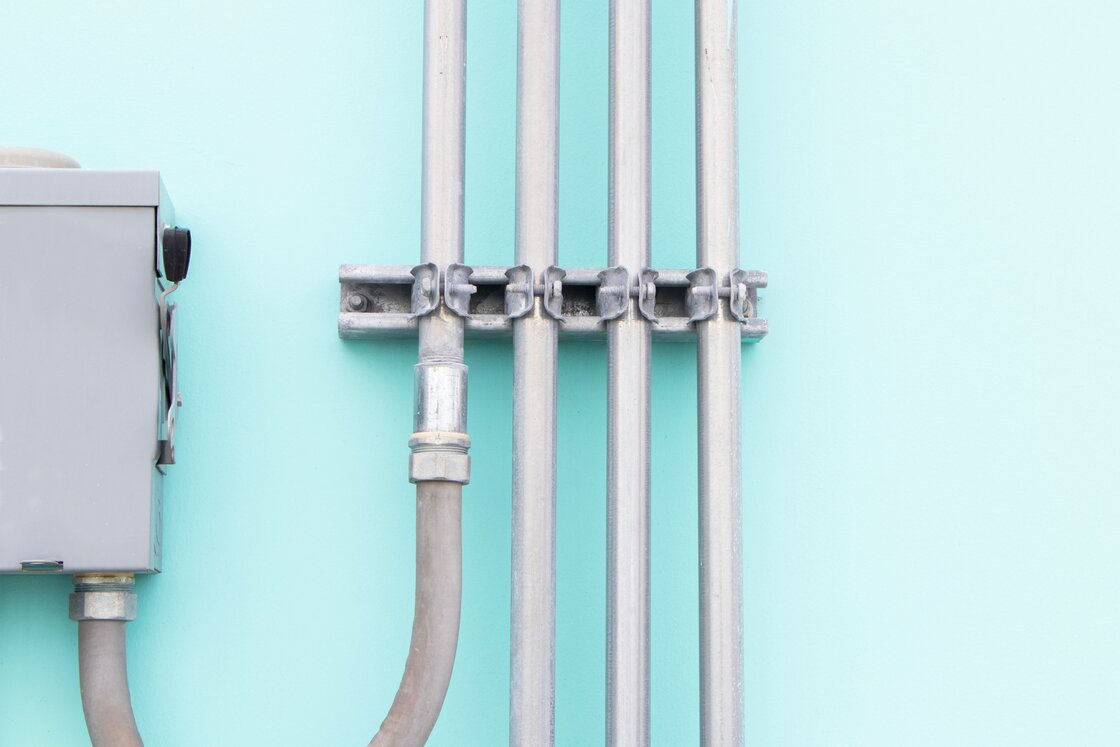Before your installation date, the electrician will purchase an electrical permit through the jurisdiction which serves your community. This process is usually done online using information already collected from you, the customer.
It's also important to anticipate the working space the electrician will need to perform your installation. For example, if the installation is being done in your garage, it's best to clear any cluttered areas so the electrician has an open working space.
- As a rule of thumb, providing three feet of working clearance in front of your electrical panel and the location of the new charger will suffice for most jobs.
If needed, clear the wall space where your unit will be installed. This means taking down items like clocks, wall decorations, or other things that may interfere with the electrician's working area.
- If overhead work seems to be needed (like over a garage door or across a ceiling), ensure your electrician has room for using a ladder.
Once onsite, the electrician may start by confirming the location you'd like your charger installed. After confirming, they will likely remove the cover from your electrical panel and temporarily discuss any power they might need to shut off during the installation.
Typically, your home's main power can stay on safely unless otherwise recommended by your electrician.
It's common to encounter a panel with limited space, therefore not allowing the necessary room to install a new breaker for your EV charger. In this scenario, the electrician will rearrange individual circuits to accommodate your charging unit. To safely rearrange your panel, the electrician will shut the power off to any impacted circuits. Unless an unforeseen issue arises, your circuits will be shut down for 15-30 minutes.
The electrician could use several installation methods and different types of electrical material as their preferred installation method. Typical installations will use conduits running along the wall's surface, terminating at the electrical panel and charger or charging outlet.
Electrical conduit (pictured below)

If you prefer the look of concealed wiring, it's best to discuss this with the electrician beforehand. This way, you and your electrician can cover any potential implications for wall repair and any possible costs of concealing wires in your wall.
Concealed electrical wiring (pictured below)

When the electrician completes all wiring steps, they will test the charger's functionality.
Note: if you've purchased the charger from a third party, do not assume the electrician is well-versed in the software connectivity needed to complete the installation. Be prepared to connect via wifi and the specified app after your unit is installed.
If your electric vehicle is available, we recommend testing your new charging point. Plugging your car in for the first time while the electrician is still onsite can help avoid scheduling additional trips in case any issues arise. However, it's uncommon for a charger and car combination to have a problem charging.
After the installation, your electrician will arrange a final electrical inspection. Figuring out the last appointment will involve you and the electrician coordinating schedules to set up a time that works for all parties. The electrical inspector will need access to all the components the electrician worked on during installation - this appointment should take less than 30 minutes.

Related articles

